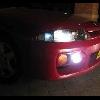Gtr Awd Torque Split Controllers
Announcements
-
Similar Content
-
Latest Posts
-
I'm working on the assumption that our friend Jasmine here is a Russian (or, possibly Ukrainian) spammer/spambot, based purely on the number of such that I have been having to neuter in the last few weeks. IP address for the OP above was in WA. But that could have been via VPN. Posting at quarter to 4 in the morning is a good sign of being from somewhere in Europe. The last Jasmine that I kicked in the cooch was IP addressed in Ukraine. Even that could have been via VPN, and the bitchbot could have been from Russia, Serbia, China or anywhere. Regardless, was a spambot, so I killed it with fire. The fact that our new friend Jasmine here did not respond in any way to my tart query strongly suggests to me that this OP was just the establishment phase of a user able to be activated for spamming in a week, or 3 or 10.
-
The stock manifold is "mostly" divided. The divider actually has a notch cut out of it where it would meet the divider on a twin scroll housing. I have no idea why. But whatever the reason, it would cause some cross talk when used with a twin scroll housing. People do put twin scroll housings onto that manifold. But I'm of the opinion that proper twin scroll internal gating is...not really possible at this scale. You'd be throwing good effort (ie $$) after bad, when you really should be doing something else. Notwithstanding that.... I am not sure what the idea that you are floating has to do with the difference in comp cover position caused by the highflow using a shorter length core than the stock Hitachi one. Can you clarify what you meant?
-
By Dose Pipe Sutututu · Posted
haha all good, also he took it out to Luddenham last year with me, on a 30+ degree day too. Car did not explode.
-





Recommended Posts
Create an account or sign in to comment
You need to be a member in order to leave a comment
Create an account
Sign up for a new account in our community. It's easy!
Register a new accountSign in
Already have an account? Sign in here.
Sign In Now